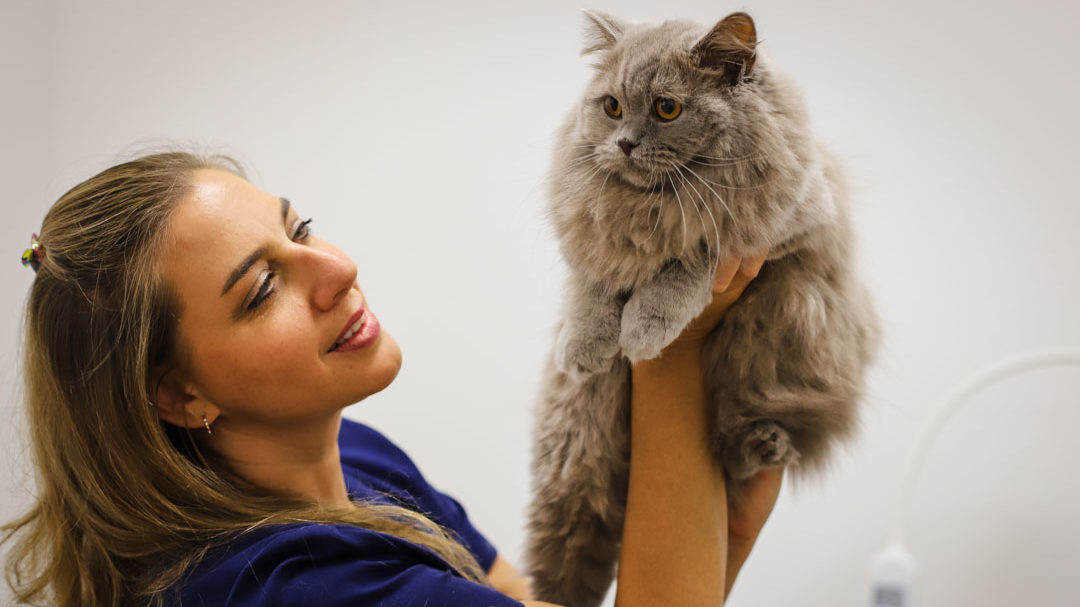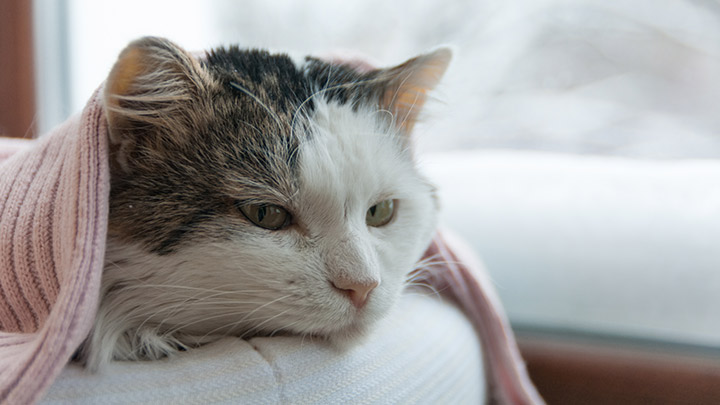Gingivitis in Cats: Understanding and Treating Feline Dental Disease
Gingivitis in cats is one of the most common dental conditions affecting cats. Left untreated, this inflammatory condition can lead to serious health complications, including tooth loss and systemic infections. Understanding the signs, causes, and treatment options can help you protect your cat's oral health and overall wellbeing.
What is Gingivitis in Cats?
Gingivitis is the inflammation of the gums (gingiva) surrounding your cat's teeth. This condition occurs when plaque - a sticky film of bacteria - accumulates along the gum line, causing irritation, redness, and swelling. Unlike periodontal disease, gingivitis affects only the gums and is completely reversible with proper treatment and dental care.
In healthy cats, gums should appear pink and firm. When gingivitis develops, the gums become red, particularly along the tooth margin, and may appear puffy or swollen. The condition can affect cats of any age but becomes increasingly common as cats get older.
Stages of Feline Gingivitis
Stage 1: Mild Gingivitis
Slight redness along the gum line with minimal swelling. No discomfort apparent.
Stage 2: Moderate Gingivitis
Noticeable redness and swelling of gums. Bad breath becomes evident. Cat may show mild discomfort when eating.
Stage 3: Severe Gingivitis
Significant inflammation, bleeding gums, and strong halitosis. Cat experiences pain and may refuse food.
Stage 4: Advanced Gingivitis
Extreme inflammation with spontaneous bleeding. Risk of progression to periodontal disease. Immediate veterinary intervention required.
Types of Dental Disease in Cats
Understanding the different forms of dental disease helps identify the specific condition affecting your cat and determines the appropriate treatment approach.
Periodontal Disease in Cats
Periodontal disease represents the progression from untreated gingivitis. This condition affects not just the gums but also the deeper structures supporting the teeth, including the periodontal ligament and alveolar bone. Once periodontal disease develops, the damage becomes irreversible, though progression can be slowed with treatment.
Signs of periodontal disease include:
- Receding gums exposing tooth roots
- Loose or missing teeth
- Pus around the tooth base
- Facial swelling
- Difficulty eating hard food
Tooth Resorption (Feline Resorptive Lesions)
This painful condition involves the gradual breakdown of tooth structure, starting from inside the tooth or at the gum line. The exact cause remains unknown, though it appears unrelated to dental decay seen in humans.
Affected teeth develop cavities at the gum line that appear as red spots on the tooth. These lesions are extremely painful, causing cats to:
- Turn their head whilst eating
- Drop food from their mouth
- Prefer soft foods
- Drool excessively
Stomatitis
Feline stomatitis is a severe inflammatory condition affecting the entire mouth, including gums, tongue, and throat tissues. This extremely painful condition often requires aggressive treatment.
Symptoms of Cat Gum Disease
Recognising the signs of dental disease early allows for prompt treatment before serious complications develop. Cats are masters at hiding pain, so subtle changes in behaviour may be your only clue.
Early Warning Signs
- Bad breath (halitosis) - Often the first noticeable symptom
- Red or swollen gums - Particularly visible along the tooth line
- Yellow or brown tartar - Hard deposits on tooth surfaces
- Drooling - May contain blood in advanced cases
Behavioural Changes
- Reluctance to eat - Especially hard kibble or treats
- Pawing at the mouth - Indicates oral discomfort
- Head tilting whilst eating - Avoiding painful areas
- Weight loss - Due to reduced food intake
- Decreased grooming - Painful mouth makes grooming uncomfortable
- Hiding or withdrawal - Response to chronic pain
Advanced Symptoms
- Bleeding gums - Spontaneous or when eating
- Loose teeth - Visible movement when touched
- Facial swelling - Indicates tooth root abscess
- Nasal discharge - From oro-nasal fistula formation
- Difficulty swallowing - In severe stomatitis cases
Causes of Dental Problems in Cats
Multiple factors contribute to the development of gingivitis and dental disease in cats. Understanding these causes helps implement effective prevention strategies.
Bacterial Plaque Accumulation
The primary cause of gingivitis is bacterial plaque buildup. Within hours of cleaning, bacteria begin colonising the tooth surface. Without regular removal, this biofilm thickens and extends below the gum line, triggering inflammation.
Dietary Factors
Diet can significantly influence dental health, with soft food diets lacking the mechanical cleaning action of dry kibble.
Anatomical Predispositions
Certain physical characteristics increase dental disease risk:
Breed-Related Factors:
- Brachycephalic breeds (Persians, British Shorthairs) experience tooth crowding, meaning food particles can become trapped in the small gaps between teeth meaning bacteria are more likely to proliferate.
- Oriental breeds show higher tooth resorption rates
- Maine Coons may have a genetic gingivitis predisposition
Dental Abnormalities:
- Retained deciduous teeth (baby teeth that do not fall out at the expected time) create plaque traps
- Malocclusion (misaligned teeth) prevents normal tooth cleaning
- Tooth crowding increases bacterial accumulation
Systemic Health Conditions
Various diseases increase an individual pet’s susceptibility to gingivitis:
- Feline immunodeficiency virus (FIV) - Compromises the immune response
- Feline leukaemia virus (FeLV) - Weakens oral defences
- Diabetes mellitus - Alters oral bacteria and healing
- Kidney disease - Creates uraemic oral environment
- Feline calicivirus - Causes chronic gingivostomatitis
Age-Related Factors
Dental disease risk increases with age due to:
- Cumulative plaque and tartar buildup
- Decreased immune function
- Reduced saliva production
- Years of dietary wear

Treatment for Dental Disease in Cats
Treatment approaches vary depending on disease severity and type. Early intervention offers the best outcomes and may avoid extensive procedures.
Professional Dental Cleaning
Professional cleaning under general anaesthesia remains the gold standard for treating established gingivitis and removing tartar. The procedure includes:
Dental Procedure Steps:
- Oral examination - Detailed assessment of all teeth and soft tissues
- Dental radiographs - Reveal any hidden problems below gum line
- Scaling - Ultrasonic removal of plaque and tartar
- Subgingival cleaning - Cleaning below the gum line
- Polishing - Smooths tooth surface to slow plaque return
Post-Procedure Care:
- Pain relief medication
- Antibiotics if infection present
- Soft food for several days
- Follow-up examination
Tooth Extractions
Severely affected teeth require extraction to eliminate pain and infection sources. Modern extraction techniques and pain management make recovery remarkably quick, with most cats eating comfortably within days.
Extraction indicators include:
- Severe periodontal disease with bone loss
- Tooth resorption lesions
- Fractured teeth with pulp exposure
- Chronic tooth root abscesses
Medical Management
Whilst addressing underlying dental disease, supportive treatments help manage symptoms:
Pain Relief - if your cat is in discomfort your vet may recommend pain relief whilst your pet awaits its dental procedure.
Antiseptic Rinses - Chlorhexidine solutions reduce bacterial load
Home Care Following Treatment
Post-treatment home care maintains results:
- Start tooth brushing once healing complete
- Use veterinary enzymatic toothpaste
- Provide dental diets or treats
- Schedule regular dental checkups
Preventing Periodontal Disease in Cats
Prevention remains far easier and less expensive than treating established dental disease. A comprehensive preventive approach combines home care with professional oversight.
Daily Tooth Brushing Routine
Regular tooth brushing provides the most effective prevention against gingivitis and periodontal disease. Success requires patience and gradual introduction.
Getting Started:
- Week 1: Let your cat taste pet toothpaste from your finger
- Week 2: Touch teeth and gums with your finger
- Week 3: Introduce soft pet toothbrush or finger brush
- Week 4: Begin gentle brushing motions
- Week 5: Establish daily routine
Brushing Technique:
- Focus on outer tooth surfaces
- Use circular motions along gum line
- Spend 30-60 seconds total
- Reward with treats or play
- Never use human toothpaste (as this is toxic to cats)
Dental Diets and Treats
Specially formulated dental diets help reduce plaque through:
- Larger kibble size requiring chewing
- Texture that cleans tooth surfaces
- Added enzymes reducing bacterial growth
- Proven plaque reduction in clinical trials
Dental treats provide supplemental cleaning between meals. Look for products carrying the Veterinary Oral Health Council (VOHC) seal.
Water Additives and Oral Gels
For cats refusing tooth brushing, alternatives include:
- Water additives - Antimicrobial solutions added to drinking water
- Oral gels - Applied to gums with finger
- Dental wipes - Remove surface bacteria
- Oral sprays - Reduce bacterial load
Whilst helpful, these don't replace brushing effectiveness.
Regular Veterinary Dental Checks
Professional examinations identify problems before they become severe. Your vet will:
- Assess gingivitis severity
- Check for tooth resorption
- Identify early periodontal disease
- Recommend cleaning frequency
- Adjust preventive strategies
Most cats benefit from annual dental examinations, though some require six-monthly checks.

Is your cat showing signs of dental disease?
Don't wait for symptoms to worsen. Book a dental health check at your local Medivet practice today. Our experienced veterinary teams provide comprehensive oral examinations and tailored treatment plans to keep your cat's mouth healthy and pain-free.
Book a dental checkGingivitis in cats represents a common but preventable condition that significantly impacts feline health and quality of life. Early recognition of symptoms like bad breath, red gums, and eating difficulties allows prompt treatment before irreversible damage occurs. Through regular tooth brushing, appropriate dental diets, and professional dental care at Medivet, you can protect your cat from painful dental disease and its serious health complications. Remember, prevention costs far less than treatment, and maintaining your cat's oral health contributes to their overall wellbeing and longevity.
Frequently Asked Questions
Gingivitis treatment involves professional dental cleaning under anaesthesia to remove plaque and tartar buildup. Your vet will scale and polish the teeth, then prescribe antibiotics if infection is present. Mild cases may improve with daily tooth brushing using pet-safe toothpaste and dental diets. Regular home care prevents recurrence after professional treatment.
Cats can live many years with properly managed gum disease, though untreated periodontal disease causes chronic pain and may shorten lifespan through secondary health complications. With regular dental care, professional cleanings, and home maintenance, cats with gum disease can enjoy normal, comfortable lives. Early treatment prevents progression to irreversible periodontal disease.
Gum disease causes significant pain that cats instinctively hide. Inflamed gums feel constantly sore, similar to human toothache. Advanced periodontal disease, with exposed tooth roots and abscesses, causes severe pain affecting eating, grooming, and behaviour. Many owners report dramatic personality improvements after dental treatment, revealing how much discomfort their cat was experiencing prior to treatment.
The four primary signs of periodontal disease in cats are: red, swollen gums that may bleed; persistent bad breath (halitosis); visible tartar buildup on teeth appearing yellow or brown; and behavioural changes including difficulty eating, dropping food, or preferring soft foods. Advanced signs include loose teeth, facial swelling, and weight loss.
Untreated periodontal disease leads to tooth loss, chronic pain, and bacterial spread to vital organs including heart, kidneys, and liver. Infection can form painful abscesses, create oro-nasal fistulas, or cause jaw fractures in severe cases. Bacteria entering the bloodstream through diseased gums may contribute to kidney disease, heart valve infections, and other systemic health problems.

